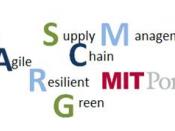Enterprise resource planning (ERP) systems are typically very complex and all-encompassing software. Supply chain management (SCM) systems are no slouches when it comes to complexity and scope, either. So why would a company attempt to implement both systems at the same time? Some rationalize that their software is in such dire straits that they need to get in front of the system's development curve, not just keep pace. Others rely on the "rip off the bandage with one quick pull and the pain won't be as bad" approach to software implementation. They reason that by implementing both software systems at roughly the same time, the business disruptions only have to be endured once but with great intensity. While this may work with bandages and human beings, most companies cannot withstand the shock to their organizations and personnel.
This article looks at reasons advising against this potentially foolhardy and risky approach.
These reasons include lack of foundation and resources, organizational trauma, and interface construction. The article closes with a discussion of which system to implement first. While not surprised by the answer, you should understand the arguments and be prepared to address them.
Lack of Foundation and Resources.
Typically, software needs a layer of data to serve as a foundation on which programs can function, process, and update. As software grows into systems, architectures, and networks, systems rely on other systems to supply this data foundation.
ERP software manages, validates, and updates the data for SCM software. This data is the form of such things as ingredients or parts, formulas or bill-of-materials, routings, resources, and orders or customer demand. Unless this data is firmly in place, SCM software can become a different kind of software beast to wrestle with. While trying to implement both ERP and SCM software simultaneously, the data...


